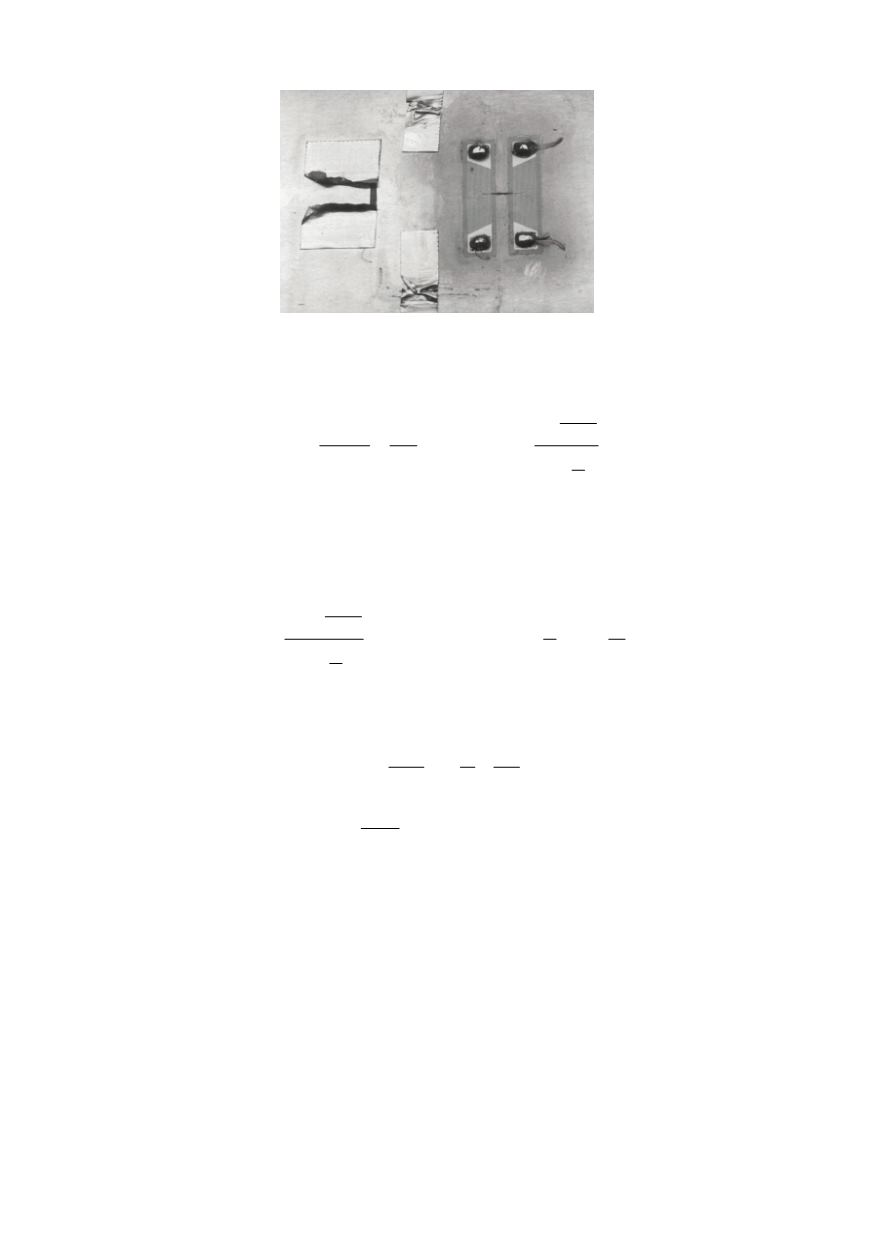

138
Figure 13: Measurement of crack opening by special gauges
For the case of part-through axial surface crack of depth
a
pressure necessary for the
penetration of remaining ligament may be calculated from an empirical equation
F
B
sc
p m p
h p
p
m R m
σ
=
=
where
1
1
p
a
m h
m a
h
−
⋅
=
−
(6)
In accordance with this two formulas, if
p
kr
> p
PP
wall penetration is stable and does
not lead to the pipe bursting (since for it higher pressure is necessary), but to the leakage.
In contrary, the wall penetration is unstable. For the case of penetration (
a/h = 1
) more
accurate formula is
1
1
p
a
m h
m
a
h
α
−
⋅
=
−
with
2
1
1 0.9 (1 )
a
h
m
α
⎛ ⎞
= +
−
⎜ ⎟
⎝ ⎠
(7)
The effect of circumferential crack depends on support condition, which may vary
between two extreme cases: free-bending and clamping.
2
2
1
kr
m
h
p
R
σ
θ
β
π
π
⎛
⎞
=
− − ⎜
⎟
⎝
⎠
(8)
Herein the last term
1
sin
sin
2
θ
β
−
⎛
⎞
= ⎜
⎟
⎝
⎠
according to the angle length of crack
2.
θ
adds
only in the case of the free bending. To the praxis corresponds best the solution
somewhere between the two extremes.
Under the effect of service conditions (loading, temperature, environment) surface
crack in the vessel wall might grow under pressure and this can lead to the wall
penetration or bursting of the vessel. In case of wall penetration, it comes to the internal
fluid release, what either leads to vessel unloading or can be observed in time by regular
inspections. Based on this, concept of Leak-before-Break (LBB) has been developed,
which is derived from the idea that the failure of the component containing fluid under
the pressure will be manifested by the leakage and in this way being under the full
control. Accordingly, if the necessary conditions, examined by fracture mechanics, are
fulfilled, growth of the crack initiated from any defect in the structure will always lead to
the wall penetration and leakage and never to the vessel bursting. Such a defect can be


















